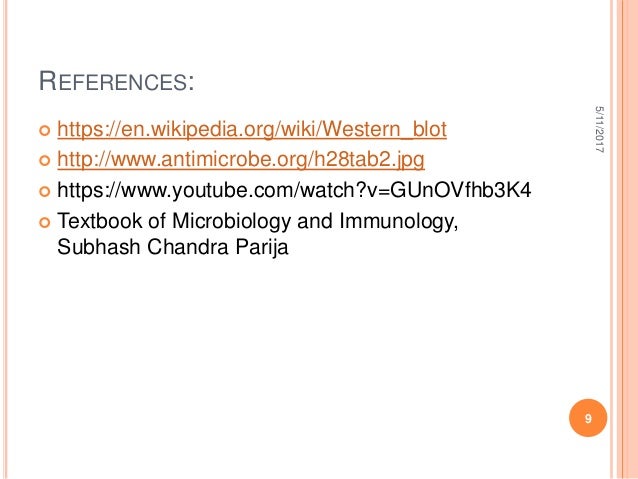
This video demonstrates SDS-PAGE separation of proteins using the Bio-Rad Comparative Proteomics Kit II: Western Blot Module.Īssembly of the blotting sandwich and electroblotting are shown along with the steps for protein detection using a colorimetric assay. Western Blot Video: SDS-PAGE Separation of Proteins Please contact Bio-Rad’s Technical Services Department to learn about recommended secondary reagents for specific applications. The method is based on building an antibody:protein complex via specific binding of antibodies to proteins immobilized on a membrane and detecting the bound antibody with. It may be useful to include a sample in which no primary antibody is used at all, in order to determine any nonspecific binding of the secondary reagent to the target tissue. Western blotting, also known as immunoblotting, is a well-established and widely used technique for the detection and analysis of proteins. Wash the membrane with gentle agitation as follows: 4x 5 min in wash buffer 3x 5 min in PBST and 2x 5 min in PBS.Īdd appropriate enzyme substrate solution and incubate as recommended by the manufacturer to visualize protein bands.Īppropriate controls should always be carried out. Wash the blot extensively in wash buffer (3 x 10 min) with gentle agitation.Īdd appropriate enzyme-conjugated secondary antibody diluted in wash buffer and incubate for 1 hr at RT with gentle agitation. Incubate for 2 hr at RT, or overnight at 4☌. Rinse the blot briefly with wash buffer and then add primary antibody diluted in the wash buffer (a concentration of 1-10 µg/ml is generally acceptable, but check datasheets for precise recommendations). Place blot into blocking solution for 2 hr at RT, or overnight at 4☌. PBS Disodium potassium phosphate, 1.15g Distilled water, 1 L Potassium chloride, 0.2 g Potassium dihydrogen phosphate, 0.2g Sodium chloride, 8.0 g PBST Disodium potassium phosphate, 1.15 g Distilled water, 1 L Potassium chloride, 0.2 g Potassium dihydrogen phosphate, 0.2g Sodium chloride, 8.0 gįollowing SDS-PAGE, transfer proteins onto blotting membrane according to the manufacturer’s instructions.Ĭheck protein transfer by staining the blot with Ponceau S for 1 min, then completely destain the blot by washing with distilled water. Washing buffer Blocking buffer + 0.1% Tween 20 Ponceau S Acetic acid, 5 ml However, we advise using our protocol for detection of phosphorylated proteins by western blot.


*Note: For cleaner western blots, Block Ace is recommended over 5% non-fat dried milk dissolved in PBS. For the detection of phosphorylated protein, use the recommended blocking solution as stated on the product datasheet. Test results are interpreted to inform veterinarians beyond the usual serological values that are reported.Blocking Buffer Block Ace BUF029 dissolved in water, or 5% non-fat dried milk dissolved in PBS. The technique was developed in 1979 1 by Harry Towbin and colleagues and later named the western blot due to the technique’s similarity to Southern blotting. Quality control, with accurate and reproducible results, is our primary goal. A western blot, sometimes called a protein immunoblot, is an antibody-based technique used to detect the presence, size and abundance of specific proteins within a sample.
#Western blot test for dummies manual
Assays are validated according to criteria published in the OIE International Standards Manual for serological assays. The Serology & Immunology Laboratory of the Animal Health Diagnostic Center develops and uses fully validated serological assays to detect antibodies or antigens as indicators for infectious diseases in production animals, companion animals, and zoo species.


 0 kommentar(er)
0 kommentar(er)
